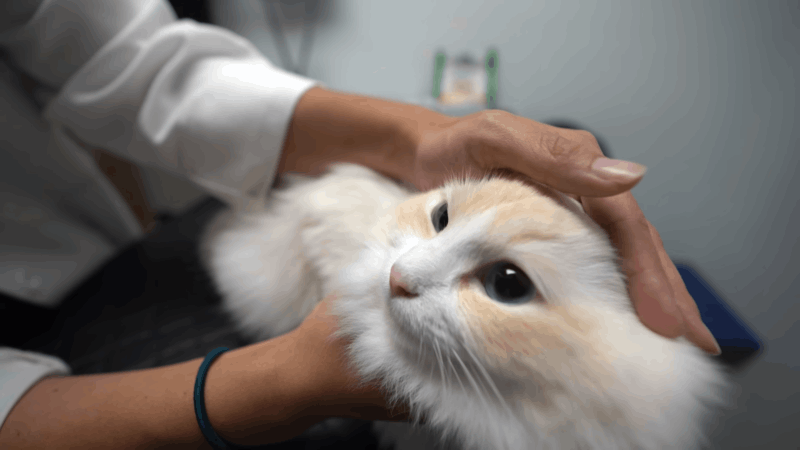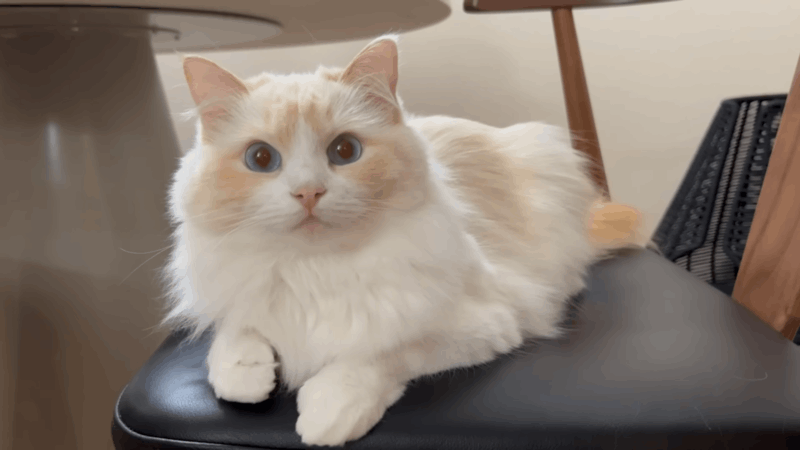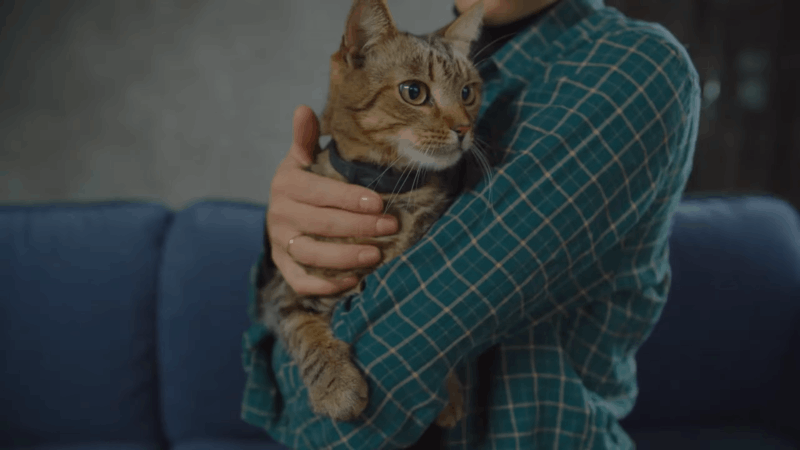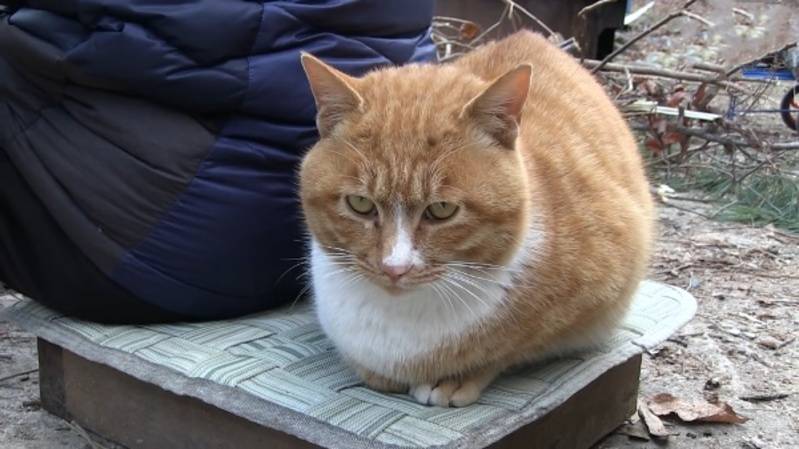No products in the cart.
Many pet lovers choose feline hyperesthesia CBD for their cats’ treatments, and it is becoming widespread. Feline hyperesthesia CBD has been gaining popularity in recent years as a natural therapeutic option to help manage a range of health conditions in cats. It can provide relief for cats exhibiting unusual behavior that may be indicative of feline hyperesthesia syndrome.
In this blog, we will discover topics about feline hyperesthesia CBD, what is feline hyperesthesia syndrome, is feline hyperesthesia syndrome deadly, and feline hyperesthesia natural treatment. Additionally, we will provide some information and techniques to help your cats with hyperesthesia.
What Is Feline Hyperesthesia CBD?
Hyperesthesia in cats Cats with feline hyperesthesia syndrome (FHS) may use CBD (cannabidiol) as a natural therapeutic option. The non-psychoactive cannabis plant chemical CBD is well-known for its possible therapeutic benefits.

The Way CBD Interacts With Feline Hyperesthesia
Cats’ endocannabinoid systems (ECS), which are involved in controlling several biological processes like mood, pain perception, and inflammation, are affected by CBD. By interacting with the ECS, CBD may help modulate these functions and potentially alleviate some of the symptoms associated with FHS, such as skin twitching and hypersensitivity.
Benefits of Using CBD for Feline Hyperesthesia
CBD for FHS may offer several potential benefits, including:
- Reduction in skin twitching and hypersensitivity.
- Calming effects promote relaxation and reduce anxiety in cats.
- Potential anti-inflammatory properties to alleviate pain and discomfort.
- Support for overall well-being and improved quality of life in cats with FHS
Tips to choose the right CBD products for cats with FHS
When selecting CBD oil for cat with FHS, consider the following factors:
- Quality and source of CBD: Choose products derived from organic hemp plants and extracted using high-quality methods.
- CBD concentration: Option for products with appropriate CBD concentrations for cats, usually in the form of CBD oil or treats specifically formulated for cats.
- Third-party testing: Look for products that have undergone third-party testing to ensure purity, potency, and the absence of contaminants.
- Ingredients: Make sure there are no additives or probable allergens on the ingredient list that could make your cat ill.
Recommended CBD Dosages for Cats With Hyperesthesia
The appropriate CBD dosage for cats with hyperesthesia is a personalized process that depends on factors like weight, overall health, and the specific CBD product used. It is advised to begin with a small dosage and raise it gradually until the desired benefits are obtained. In general, several daily treatments of 0.2 to 0.5 milligrams of CBD per kilogram of body weight are advised for cats. However, individual responses may vary, so close monitoring and adjustments may be necessary to find the optimal dosage for each cat
What Is Feline Hyperesthesia Syndrome?
Feline hyperesthesia syndrome (FHS), also known as “rolling skin disease” or “rippling skin disease,” is a neurological disorder that affects cats. It is characterized by various symptoms, including skin twitching, muscle spasms, excessive grooming, vocalization, and behavioral changes.

The Effects of Hyperesthesia Syndrome on Feline Behavior
Feline hyperesthesia syndrome (FHS) can have various effects on cats, both physically and behaviorally. Here are some common ways FHS can affect cats:
- Skin twitching and rippling: One of the defining characteristics of FHS is excessive and abrupt skin twitching or rippling along the cat’s back, tail, or flank. This twitching is often accompanied by increased sensitivity or discomfort in the affected areas.
- Tail chasing or self-directed aggression: Cats with FHS may exhibit repetitive behaviors such as chasing or attacking their tails or engage in self-directed aggression, such as biting or scratching themselves. These behaviors are often triggered by the discomfort or heightened sensory sensations associated with FHS.
- Increased grooming or licking: FHS can lead to excessive grooming or licking in affected cats. This behavior may be an attempt to alleviate the discomfort or irritation they experience due to the syndrome.
- Behavioral changes: Cats with FHS may show changes in their behavior, such as increased restlessness, pacing, or difficulty settling. They may also become more anxious, irritable, or aggressive, especially when experiencing episodes of heightened sensitivity.
- Hair loss or skin lesions: Due to excessive grooming and self-directed aggression, cats with FHS may develop hair loss, bald patches, or skin lesions in the affected areas. These can result from the cat’s attempts to alleviate the discomfort associated with FHS.
Other associated symptoms: Some cats with FHS may exhibit other symptoms such as dilated pupils, heightened reactivity to touch or sound, and generalized hyperactivity or agitation during episodes.
Causes of Feline Hyperesthesia Syndrome
It is still unclear what exactly causes feline hyperesthesia syndrome (FHS). But a variety of elements might have contributed to the development of this sickness. Here are some potential causes:
- Neurological abnormalities: FHS is believed to involve abnormal functioning of the nervous system, particularly in the sensory processing areas. It is thought that certain nerve pathways or receptors may be overactive or hypersensitive, leading to the symptoms seen in cats with FHS.
- Genetic predisposition: certain cats seem to be more predisposed to developing FHS than others; the disorder may have a hereditary component. For instance, Siamese and Burmese cats have been found to have a higher incidence of FHS, suggesting a hereditary vulnerability.
- Stress and anxiety: Stressful situations or environmental factors can potentially trigger or exacerbate FHS symptoms in susceptible cats. Stressors such as changes in routine, new additions to the household, or conflicts with other pets can contribute to the onset or worsening of FHS.
- Sensory hypersensitivity: Cats with FHS may have heightened sensitivity to sensory stimuli such as touch, sound, or visual cues. Even everyday sensations that would not typically bother a cat may trigger a strong response in cats with FHS.
- Underlying medical conditions: FHS can sometimes be associated with other medical conditions, such as allergies, dermatitis, or spinal abnormalities. These underlying health issues may contribute to the development or exacerbation of FHS symptoms.
Is Feline Hyperesthesia Syndrome Deadly for Cats?
Feline hyperesthesia syndrome (FHS) itself is not considered deadly for cats. However, it may have a significant negative effect on their quality of life, causing them pain and distress. In rare cases, self-injury resulting from excessive grooming or biting due to FHS may cause secondary infections or other complications. Early detection and appropriate management of FHS are crucial to improving the cat’s well-being and minimizing potential complications.

Types of Hyperesthesia Syndrome in Cats
There are different types of hyperesthesia observed in cats, including:
- Primary hyperesthesia: a disorder marked by cutaneous sensitivity, twitching, and other behavioral symptoms It is often referred to as feline hyperesthesia syndrome (FHS).
- Secondary hyperesthesia: hyperesthesia develops as a side effect of another medical illness, such as dermatitis, allergies, or nerve abnormalities.
Diagnosis of Cats Hyperesthesia
Diagnosing cats with hyperesthesia typically involves a comprehensive veterinary examination, including a physical assessment and evaluation of the cat’s medical history. Additional tests may be conducted to rule out other potential causes, and careful observation of the cat’s behavior and reactions to stimuli is crucial in confirming the presence of hyperesthesia symptoms. In complex cases, referral to veterinary specialists may be necessary for further evaluation and expertise.
Is There Any Feline Hyperesthesia Natural Treatment?
Yes, there are natural treatment options available for feline hyperesthesia syndrome. While there is no known cure for the condition, natural remedies can help manage the symptoms and improve the overall well-being of affected cats.
Here are five natural treatment options for feline hyperesthesia syndrome:
- Environmental enrichment: Provide a stimulating environment with toys, scratching posts, and climbing structures.
- Stress reduction techniques: Use music therapy, aromatherapy, and pheromone therapy to create a calming atmosphere.
- Dietary changes: Opt for a high-quality diet that includes omega-3 fatty acids or other beneficial supplements.
- Massage therapy: Gentle massages can help relax the cat’s muscles and promote relaxation.
- Behavioral modification: Work with a professional animal behaviorist to address underlying behavioral issues and develop appropriate strategies.

The Effects of Natural Treatments on Cats Hyperesthesia
Natural treatments for FHS can have varying effects on cats, as each cat may respond differently. Some potential effects of natural treatments include:
- Calming the nervous system: Natural treatments such as stress reduction techniques, herbal supplements, and environmental enrichment can help calm the cat’s nervous system, reducing anxiety and promoting relaxation.
- Relieving muscle tension: Techniques like massage therapy or acupuncture can help relax the cat’s muscles and alleviate muscle tension associated with hyperesthesia.
- Supporting skin health: Natural remedies that focus on improving overall health, such as dietary changes or herbal supplements, may also support skin health, reducing itching or irritation commonly experienced by cats with hyperesthesia.
- Promoting overall well-being: Natural treatments aim to enhance the cat’s overall well-being by addressing various aspects of their health, such as stress reduction, physical comfort, and balanced nutrition.
Other Treatment Options for Feline Hyperesthesia
In addition to natural treatments, other treatment options for FHS may include:
- Medications: Veterinarians may recommend medications to treat particular FHS symptoms, like anxiety or compulsive behavior.
- Environmental modifications: Creating a calm and stress-free environment for the cat can help alleviate FHS symptoms. This may involve providing hiding spots, minimizing loud noises, and using pheromone diffusers.
- Behavior modification: Working with a professional animal behaviorist can help address any underlying behavioral issues contributing to FHS and develop appropriate strategies for managing them.
- Dietary changes: Certain dietary changes, such as including omega-3 fatty acids or giving a well-balanced, premium diet, may boost the cat’s general health and maybe lessen the symptoms of FHS.
Techniques That Can Help Cats With Hyperesthesia
Several techniques can benefit cats with hyperesthesia and help manage their symptoms, including:
- Gentle and soothing massages: Massaging the cat’s muscles can help relax them and reduce tension.
- Environmental enrichment: Providing engaging toys, interactive play sessions, and vertical spaces for climbing can help redirect the cat’s focus and alleviate stress.
- Stress reduction techniques: Techniques such as music therapy, aromatherapy, and pheromone therapy can help create a calming environment for the cat.
- Positive reinforcement training: Training the cat using positive reinforcement techniques can help redirect their attention and reinforce desired behaviors.
Conclusion
Feline hyperesthesia syndrome (FHS) is a neurological disorder that can be managed through various approaches. CBD, with its potential therapeutic benefits, offers a natural option for cats with FHS. Proper diagnosis by a veterinarian experienced in FHS is essential, and close monitoring of the cat’s response to treatments is necessary to optimize their well-being. By adopting a personalized and holistic approach, cats with FHS can experience improved quality of life and symptom relief.
I am Nelson Cooper, I pursue my passion for writing and my belief is that cats love humans. I enjoy traveling and have a deep appreciation for the beauty of nature, as well as a soft spot for animals, particularly cats.



